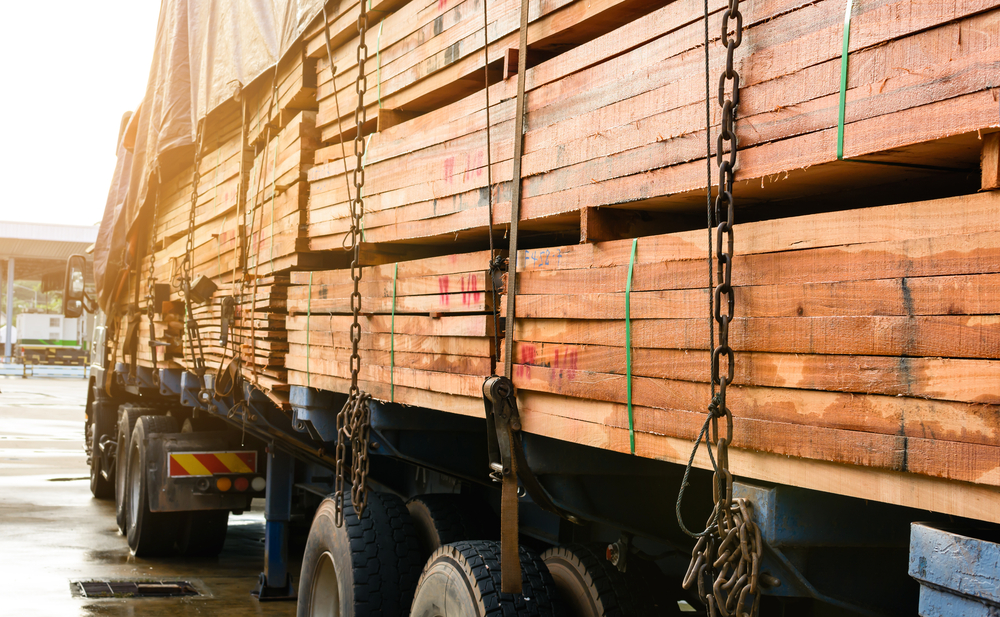When managing your day-to-day freight challenges and struggling to fill customer orders on time, it’s easy to overlook big changes in the market that will impact your business. Not preparing your supply chain for the lumber shakeup could be disastrous.
Price volatility in the lumber market over the last few years has had a roll-over effect on multiple industries, from building materials, wood products like furniture, and paper packaging to housing construction and DIY retail. Recent changes in new lumber future contracts will ease price volatility and boost trading volume.
New contract facilitates deliveries and draws more participants
Top commodities have struggled to maintain stability since the pandemic, none more than lumber. According to Insider, lumber prices collapsed below $300 per thousand board feet in early 2020, jumped to $1,000 later that year, crashed again, soared past $1,700 in May 2021, tumbled back down, rebounded to nearly $1,500 in March of this year, plunged yet again, and at the end of July were below $600 as the housing market slows down.
Earlier this year, Russia’s invasion of Ukraine aggravated the already-soaring lumber prices causing leading lumber futures to routinely hit the daily limit-down or limit-up price triggers. When that trigger was pulled, trades froze for the remainder of the session while the industry scrambled to find ways to make the market more liquid.
There were a lot of bumps in the road; I hope you were wearing your seat belts. But there are smoother roads on the horizon.
The CME Group, the world's largest financial derivatives exchange, launched a new future contract in August intended to facilitate deliveries, draw in more participants, and stabilize prices. Logistics plays a key role in enacting these changes.
More trucks enable smaller projects
We’re gearing up to see a market shift as smaller contracts will boost trading volume. Here’s how it works.
Previously, railcars were the prime mode of transportation for lumber. Now, trucks are allowed to fulfill contracts. That’s a game changer.
Trucks carry less per load than a railcar, about one-quarter of the lumber. With these new futures contracts, buyers can hedge off smaller projects that didn’t fit the old contract sizing model.
Stinson Dean, a lumber trader, explained to Insider that a truck can carry enough lumber for two houses while a railcar can carry enough for eight. A contract for a quarter the amount of lumber, in theory, should quadruple trading volume. But that is likely just the baseline, and Dean predicted volumes could increase by eight or ten times "as more and more lumber futures observers become confident lumber futures traders."
Spruce it up
Changes in the logistics hub and types of materials are also adding a boost to the lumber industry.
With the new contracts, lumber will arrive in Chicago, a much more central and accessible trade destination for a wider range of buyers. Previously, the loads landed in a distant part of Canada.
In addition, the CME's wider specifications now allow for new types of lumber, including eastern spruce, pine and fir species.
All these changes cater to a market slowing down amidst fears of a recession and a decelerating housing market. Buying less quantity per contract allows for more contracts, and hopefully this will buoy the market going forward.
Lessons we can learn from the timber industry
Whether your supply chain touches the timber market or not, there are broadly applicable lessons to be learned. We list a few below that are easy to implement across business sectors.
Changing shipping mode offers flexibility
If we’ve learned anything over the past few years, it's to be flexible and look for ways around logistics snarls and port congestion. Each mode of transportation offers unique opportunities. Dedicated truckload (TL) gets product from A to B while reducing mishandled shipments. Less-than-truckload (LTL) facilitates sending smaller volumes more often. Unloading containers at less congested ports and transferring the freight to another mode avoids weeks of delays. A move from a dedicated fleet to fully managed transportation services can eliminate maintenance costs and save on freight outlay while still ensuring high OTD.
A seasoned 3PL like IL2000 constantly scrutinizes the bigger picture to find the most efficient way to move your freight and keep your supply chain moving.
Location matters
Changing or consolidating your warehousing and distribution center can have several benefits. Moving closer to a key client's location allows you to cater to their supply chain's Just-In-Time (JIT) delivery needs. If you’re up against a competitor in a prime area, moving your operations closer will allow you to compete with a shorter, more reliable delivery time and improve client satisfaction in the region.
Sometimes simply reducing the number of warehouses you use can reduce expenses and help consolidate shipments.
We’re not saying Chicago is the answer, but we will advise you on locations and consolidations that can have a significant impact on the cost-effectiveness of your freight management and the overall efficiency of your business.
Smaller orders can mean more volume and increased business overall
As the market shifts in unpredictable and uncontrollable ways, businesses need to adapt. One way is to shift to a JIT supply chain, eliminating the issues that come with large inventory build-up. Smaller materials arriving as needed can improve overall efficiency.
And if you’re shipping out to clients, consider that they might be making similar changes. Perhaps allowing smaller orders with more precise delivery times could help them manage their manufacturing process more effectively. It may not be building one house at a time, but the framework still applies.
If you’re supplying retailers who are unsure of future demand, offering smaller minimum order numbers may decrease their risk and hesitancy to order.
A 3PL can help manage this freight by providing guidance, tools and resources to ensure you are shipping most efficiently and effectively across any mode of transportation, including TL, LTL and International. This guarantees your direct customers get the materials they need when they need them.
A slowing market can offer new opportunities
Decisions to streamline a portfolio by eliminating products or reducing excessive complexity in product lines can lead to a more efficient running of your supply chain. Not only does manufacturing become more focused, but it also frees up resources and working capital otherwise held up in slow-moving inventory.
Seeking out operational efficiencies and investing the savings can pay off for years to come. Use a centralized BI platform and Power BI dashboard to provide data clarity and highlight areas of your transportation management that can be optimized for efficiency, productivity and quality. A robust MS to manage your shipments and a review of carriers is a good start.
Sourcing new materials future-proofs supply chains
Sourcing and procurement can play a large part in future-proofing supply chains.
As products become unavailable and wait times increase, companies that adapt by sourcing alternative materials will avoid costly supply chain disruptions. Collaborate with suppliers who can help to streamline operations and reduce costs. For example, perhaps spruce lumber will work just as well as pine lumber has in the past.
Use BI to identify savings and minimize risk. For example, do some suppliers have lower costs and better reliability? Are shipments from certain regions costing you more than they should?
Our team of experts advise on ways to improve the end-to-end efficiency of your supply chain, looking for easy wins by transporting new materials from different locations – whatever it takes to avoid disruption.
Thought partnership with IL2000

As the lumber industry adapts to the new futures contracts and the slowing market, smaller contracts and smaller shipments will ease the supply chain chokehold. Navigating these changes while running an efficient operation takes brains and brawn – picture Paul Bunyan on a loading dock. Eight feet tall and moving freight like there’s no tomorrow.
But there is a tomorrow, and what lies ahead in terms of supply chain efficiency and freight optimization depends on the decisions you make today.
The solution isn't a pre-formulated plan or product. It's a team of professionals with their eyes open who see the big changes coming and know what to do about them. Chose a 3PL that can work alongside your team as supply chain thought partners.
Let’s talk about the steps to get started.


